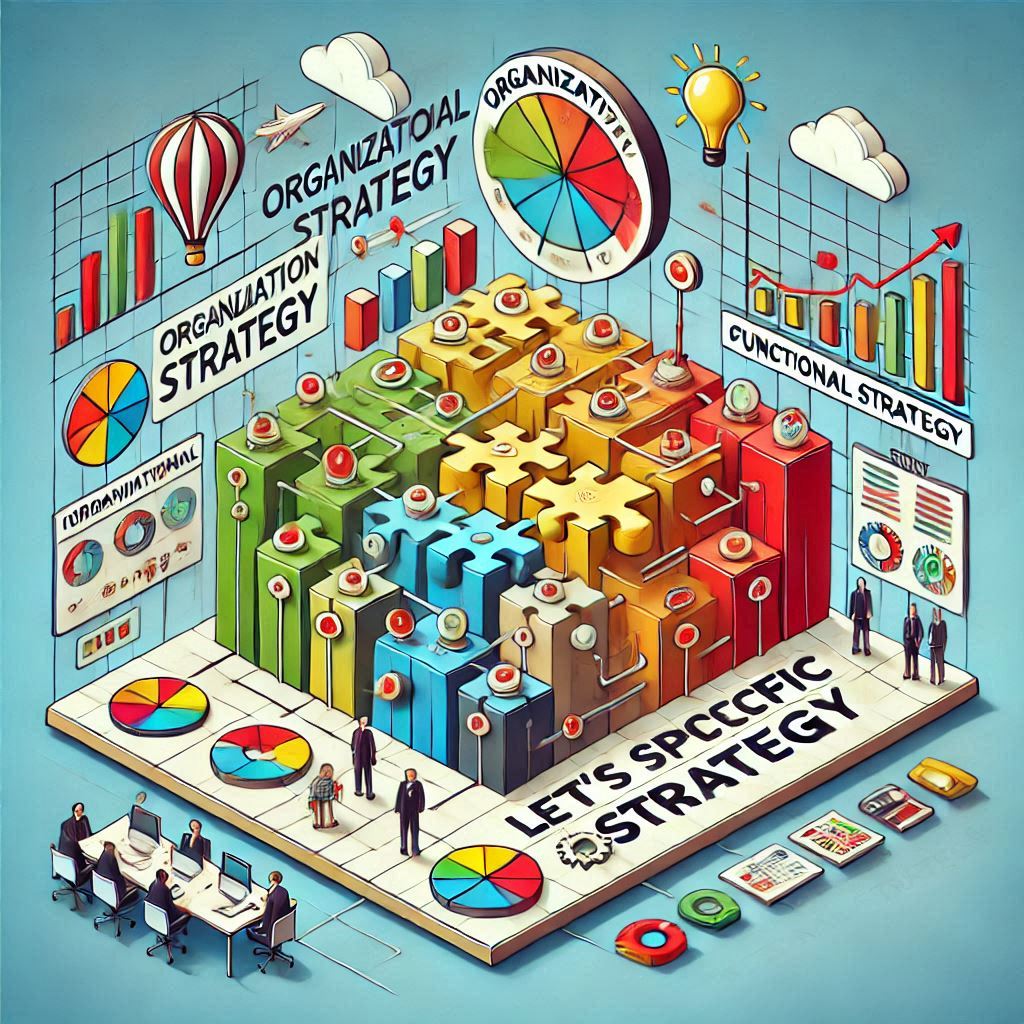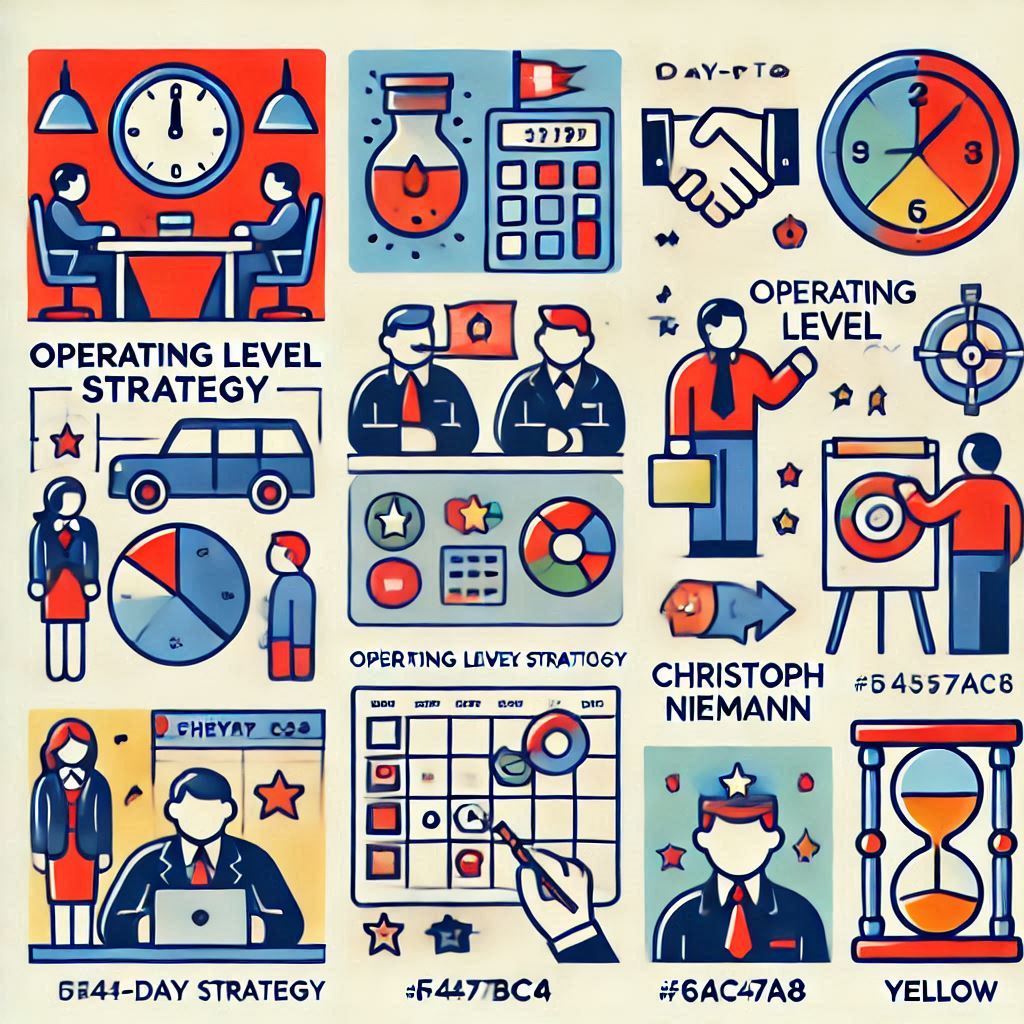Four Types of Organizational Strategies Explained
Organizational strategies are the backbone of any successful business. They provide a roadmap for achieving goals and maintaining a competitive edge in the marketplace. Understanding the different types of organizational strategies can help leaders make informed decisions about the future of their companies.
In this article, we will explore four common types of organizational strategies and how they can be implemented to drive success. Whether you’re new to the business world or a seasoned executive, this information will provide valuable insights into the inner workings of organizational strategy.
What’s an Organizational Strategy
Organizational strategy involves the practical arrangement of business resources to achieve the company’s goals and adapt to changes in the market. This planned approach allows businesses to leverage new developments while focusing on their objectives. By aligning departments and teams with the overall business goals, organizational strategy enables better decision-making and ensures everyone is working toward the same priorities.
At its core, organizational strategy defines the framework for the business, shaping its activities and guiding its direction. It impacts nearly every aspect of the business and determines the relationships between different resources. Moreover, it plays a key role in managing organizational change, focusing on creating momentum and driving progress rather than simply seeking agreement.
Kinds of Organizational Strategies You Should Know
The Big Picture: Corporate-Level Strategy

Corporate-level strategy is a fundamental aspect of organizational strategy that provides guidelines for allocating resources, managing mergers, defining priorities, and effectively managing the company’s overall portfolio. It plays a crucial role in shaping the organization’s long-term vision and goals, ensuring that these align with the company’s unique strengths and values.
For example, a company may allocate resources to expand its international market share, acquire new firms, or diversify its product portfolio, all of which fall under the corporate-level strategy. This strategic approach ensures that the company’s long-term objectives align with current market conditions and opportunities.
Focusing on corporate-level strategy allows businesses to stay ahead of the competition by making informed decisions about resource allocation, growth opportunities, and portfolio management. This strategic approach empowers companies to navigate rapidly shifting market conditions effectively and maintain a competitive edge.
Getting Down to Business: Business Level Strategy

A business-level strategy is one of the four main organizational strategies that aim to maximize competitive advantages and differentiate offerings from those of the competition. This involves deciding how a company will compete in its respective market. For example, a company may choose to compete based on cost leadership, offering products or services at the lowest price in the industry. Alternatively, they may compete based on differentiation, offering unique or high-quality products perceived as superior to competitors.
Understanding business-level strategy is essential for companies as it guides them in making choices related to their competitive positioning. By aligning their resources and efforts to implement a business-level strategy, companies can effectively carve out a niche in the market, attract customers, and ultimately achieve success.
Overall, business level strategy plays a crucial role in how a company positions itself within its industry and differentiates itself from competitors to achieve long-term success.
Contact Medallion Partners today to learn more about aligning your business level strategy with your long-term vision and goals.
Organizational Strategy: Let’s Get Specific with Functional Strategy

Functional-level strategy is a vital aspect of organizational strategy. This level of strategy guides various departments within a company, aligning their efforts with the company’s long-term vision and goals. For example, a company’s marketing department may implement a functional-level strategy focusing on social media engagement to strengthen the brand’s online presence and reach a wider audience. On the other hand, the operations department might focus on process optimization to improve productivity and efficiency.
In a manufacturing company, the functional level strategy might involve streamlining production processes, optimizing supply chain management, and implementing quality control measures to ensure the delivery of high-quality products to customers. In a service-based company, the functional level strategy may focus on customer relationship management, service delivery excellence, and staff training and development to enhance the overall customer experience.
Functional-level strategy plays a significant role in contributing to an organization’s overall success by ensuring that each department’s efforts are aligned with the company’s overarching objectives.
Day-to-Day Actions: Operating Level Strategy

At the day-to-day operating level, organizational strategy shapes businesses’ activities. This level of strategy focuses on the practical implementation of broader strategies and processes within the organization’s daily operations.
For example, operating-level strategy influences employees’ tasks and resource allocation within different departments. It guides the development of actionable systems for implementing new strategies and processes. For instance, a manufacturing company may use an operating-level strategy to determine the most efficient production processes and workflows to align with the broader business goals.
In the retail sector, the operating level strategy might involve decisions about inventory management, customer service protocols, and sales techniques to ensure that the business’s strategic priorities are reflected in day-to-day operations.
Why Do Companies Make Strategies?
Making Better Choices With a Plan

When it comes to organizational strategies, making better choices with a plan is essential for businesses to thrive. This involves understanding the four main types of organizational strategies and leveraging them to align with the company’s unique strengths and goals.
For example, corporate-level strategy provides guidelines for resource allocation, while business-level strategy aims to maximize competitive advantages. Functional-level strategy offers guidance to various departments, and operating-level strategy creates actionable implementation systems for new strategies and processes.
Implementing these strategies effectively allows businesses to provide a roadmap for progress toward long-term goals, fulfill their mission and vision, and adapt to market trends. It also facilitates workplace engagement and ensures that resources are allocated efficiently.
Ultimately, making better choices with a plan ensures businesses can navigate rapidly shifting market conditions and stay ahead of the competition.
- Understanding the four organizational strategies
- Leveraging strategies to align with unique strengths and goals
- Providing a roadmap for progress and fulfilling the mission and vision
- Facilitating workplace engagement and efficient resource allocation
Teaming Up: Aligning Everyone’s Goals

Organizational strategy is vital for businesses to effectively align resources with their long-term vision and goals. Understanding the four main organizational strategy types—corporate, business, functional, and operating level—is essential for developing strategies that help fulfill the company’s mission and vision.
For example, the corporate level focuses on resource allocation, mergers, and portfolio management to define priorities. At the business level, the emphasis is maximizing competitive advantages and differentiating offerings from the competition. In contrast, functional-level strategy guides various departments, and operating-level strategy creates actionable implementation systems for new strategies and processes.
An effective organizational strategy provides a roadmap for progress toward long-term goals, aligns efforts toward a shared sense of direction, and facilitates employee engagement. It also enables organizations to adapt to market trends and efficiently allocate resources.
When developing the right organizational strategy for your business, seeking guidance from experienced strategy consultants can be beneficial. Consultants, like those at Medallion Partners, can assist in improving efficiency, increasing productivity, and implementing the perfect organizational strategy.
Organizational Strategy: Setting Directions and Priorities

Defining operational priorities and setting directions is integral to organizational strategy. In the rapidly shifting market conditions, businesses face the challenge of aligning efforts with long-term visions and allocating resources effectively. This is where the four organizational strategies come into play.
Corporate-level strategy provides guidance for resource allocation, mergers, portfolio management, and setting priorities, while business-level strategy focuses on maximizing competitive advantages and differentiating offerings from the competition. Functional-level strategy offers departmental guidance, and operating-level strategy creates actionable implementation systems for new strategies and processes.
For instance, a retail company may prioritize a business-level strategy to maximize competitive advantages by enhancing its product offerings and customer service. Additionally, aligning efforts with the company’s long-term vision means prioritizing corporate-level strategy to allocate resources effectively.
Understanding these strategies empowers businesses to navigate the complexities of the market and stay ahead of the competition. Effective organizational strategy sets the direction and priorities necessary to achieve long-term success.
How a Learning Plan Fits in the Big Strategy
The Team Boost: Growth Challenge
The Team Boost: Growth Challenge In Organizational Strategy
- In today’s fast-paced market conditions, organizational strategy is more critical than ever in guiding businesses toward success. The four main types of organizational strategy, including corporate, business, functional, and operating level strategy, provide a roadmap for progress toward long-term goals, effectively allocate resources, and help companies adapt to market trends.
- Corporate-level strategy assists in resource allocation, mergers, and defining priorities. Business-level strategy maximizes competitive advantages, while functional-level strategy guides various departments. Operating level strategy creates actionable implementation systems for new strategies and processes.
- An effective organizational strategy provides a shared sense of direction, facilitates workplace engagement, and helps organizations adapt to market trends. For example, a business-level strategy could involve differentiating offerings from competitors in the market, while an operating-level strategy might involve implementing new production processes to improve efficiency.
When the Plan Changes: Managing Organizational Change
Stepping Up: The 8-Step Process for Changing Things
Within organizational strategies, the 8-Step Process for Changing Things, or “Stepping Up,” provides a clear framework for businesses looking to adapt and evolve. By employing this methodology, organizations can effectively navigate the complexities of change and successfully implement new strategies.
The first step in the process is to create a sense of urgency, emphasizing the need for change within the organization. This can be illustrated by highlighting market trends, customer demands, or internal inefficiencies that require immediate attention. For example, a company may demonstrate the need for change by showcasing declining sales figures or customer feedback on product shortcomings.
The next step involves building a guiding coalition and assembling a team of influential individuals who can champion the change effort. This could involve key stakeholders, department heads, and influential employees to advocate for the proposed strategies.
The following steps focus on developing a clear vision for change, communicating this vision effectively, and empowering employees to act on the vision. Organizations can successfully drive change across all levels through practical examples, such as a company-wide town hall meeting to articulate the vision and provide employees with specific action plans.
Finally, the process emphasizes the need to create short-term wins and build on the momentum of change before anchoring these changes in the organization’s culture. This could be demonstrated by celebrating early successes and integrating change into performance management systems and reward structures.
By following the 8-Step Process for Changing Things, organizations can effectively implement and adapt their organizational strategies, ensuring they remain aligned with their long-term goals in a rapidly shifting market.
Got Questions About Organizational Strategies?
What’s an Example of a Strategy?
In business, an example of a corporate-level strategy is the decision to merge with another company to pool resources and expand market reach. An example of a business-level strategy is a retail company offering unique products and experiences to distinguish itself from the competition. For functional level strategy, consider improving customer service across all departments to enhance the overall customer experience. Lastly, an operating-level strategy could involve implementing new software systems to streamline internal processes and increase efficiency. These examples demonstrate the practical application of organizational strategies in real business scenarios.
Learning How to Implement Organizational Strategies
As companies face challenges in today’s rapidly evolving market, understanding organizational strategy levels is crucial for successful adaptation and innovation. Aligning strategies with a company’s strengths, values, and vision empowers businesses to thrive amidst changing conditions. Emphasizing the practical application of strategy examples, from corporate to operating levels, gives businesses the tools they need to navigate and succeed in today’s competitive landscape.
Why Should We Care About Strategy?
Organizational strategy is more critical than ever as businesses face competitive challenges and rapidly changing market conditions. A strategic approach is necessary to stay ahead of the game.
Understanding the four main types of organizational strategies empowers businesses to align their efforts with their long-term vision. Corporate-level strategy guides resource allocation and portfolio management. The business-level strategy aims to enhance competitive advantages. Functional-level strategy guides various departments, and operating-level strategy creates actionable implementation systems for new strategies.
Organizational strategies also provide a roadmap for progress toward long-term goals, effectively allocating resources and facilitating workplace engagement. These strategies help businesses adapt to market trends and ensure that learning goals and programs are aligned with the broader strategic focus.

Vizologi is a revolutionary AI-generated business strategy tool that offers its users access to advanced features to create and refine start-up ideas quickly.
It generates limitless business ideas, gains insights on markets and competitors, and automates business plan creation.


